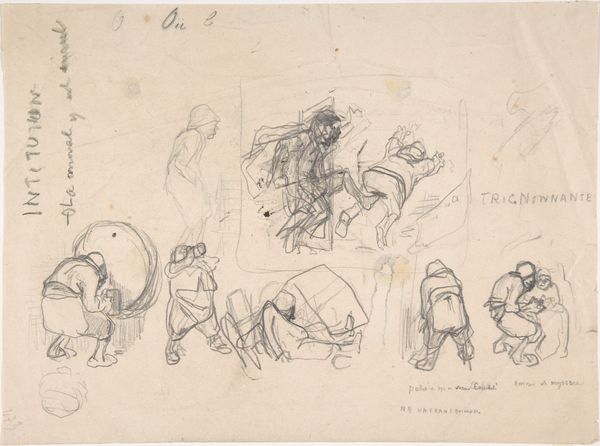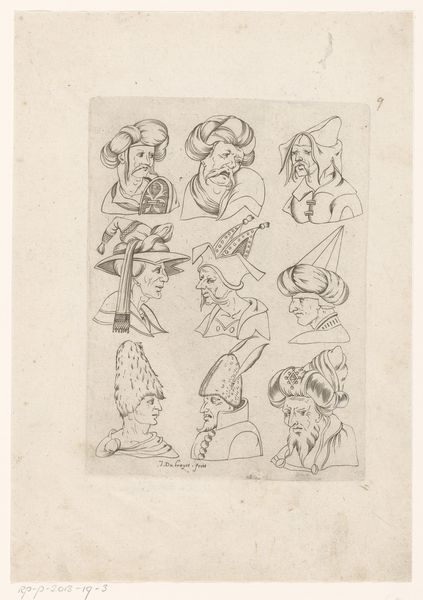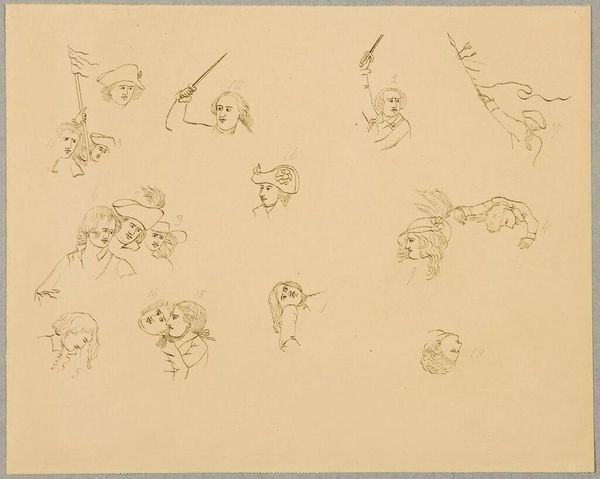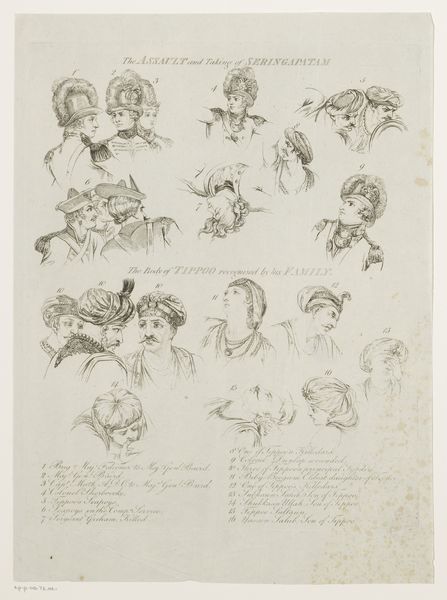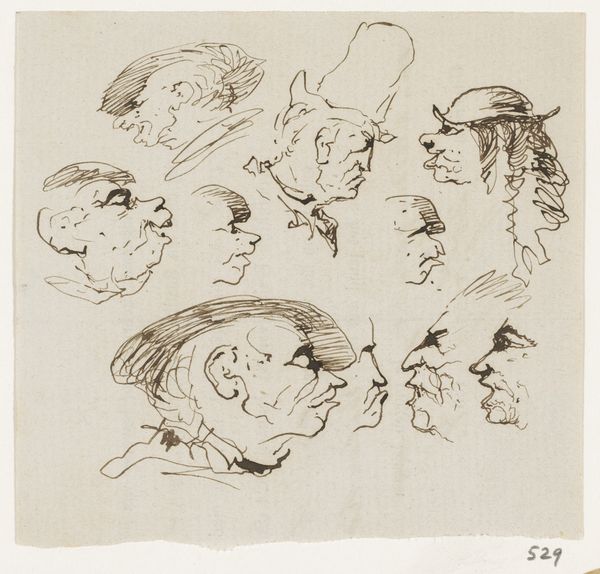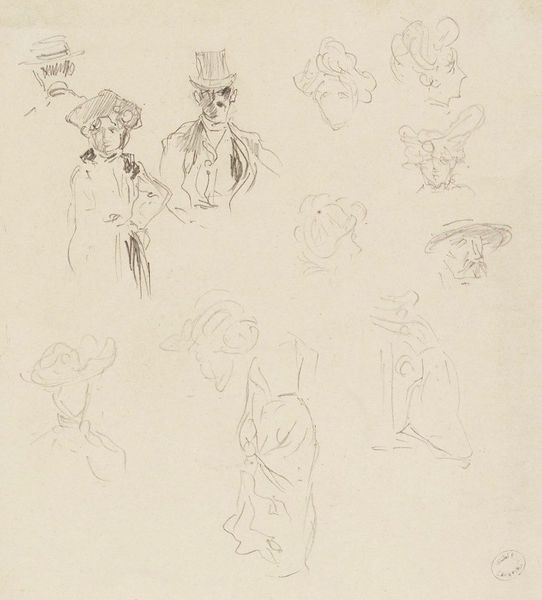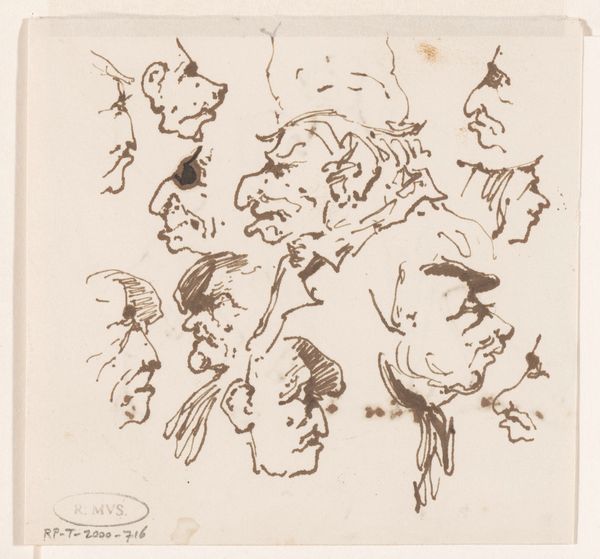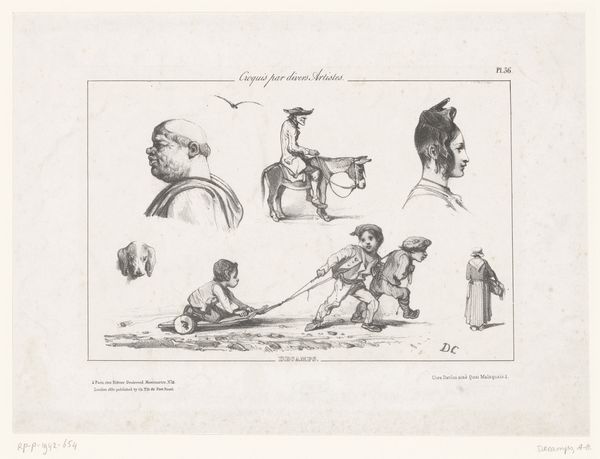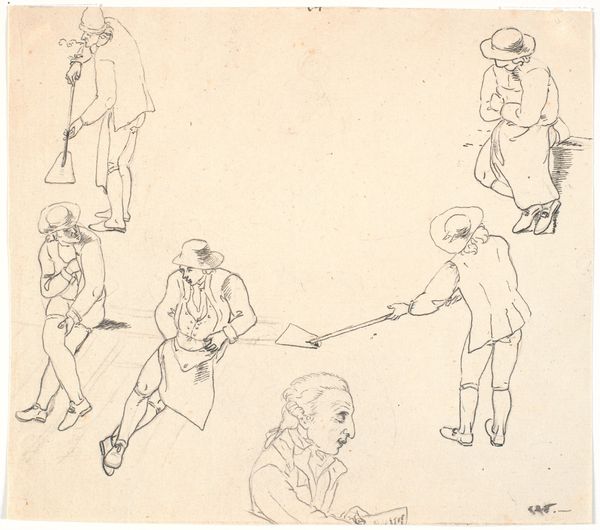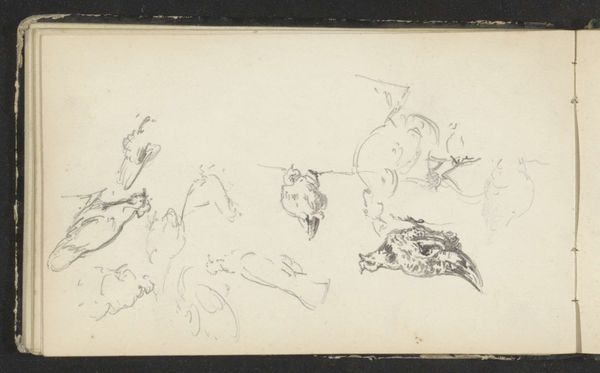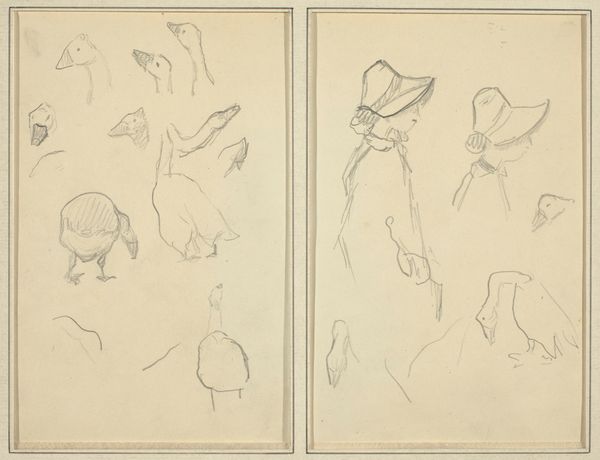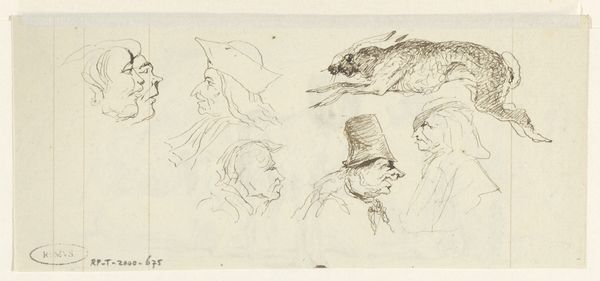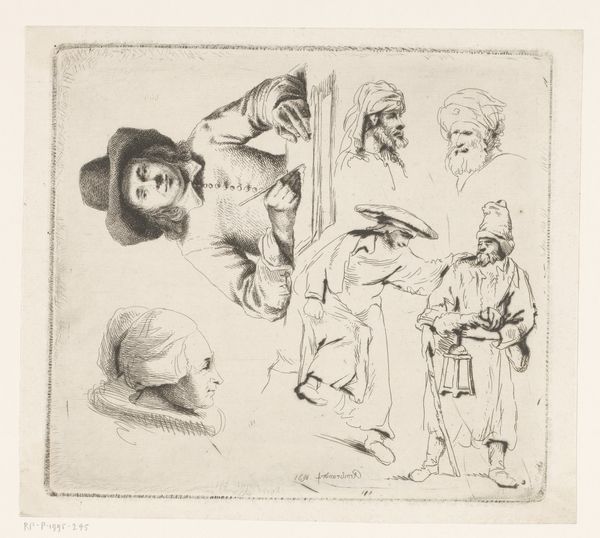
drawing, print, pen, engraving
#
portrait
#
drawing
# print
#
caricature
#
pen
#
engraving
Dimensions: 185 mm (height) x 219 mm (width) (plademaal)
Curator: Editor: I am intrigued by this pen and engraving artwork. It's titled "Karrikaturer," created in 1831 by Hans Mathias Vilhelm Lunding. It features a collection of caricatures. They strike me as quite varied in expression, some rather comical, others almost severe. What’s your take on them? Curator: This piece offers a potent social commentary. Look closely – the exaggerated features, the clothing, they speak to specific social classes and power dynamics of 1830s Denmark. Do you see how caricature, as a form, allows for the safe expression of dissent, particularly in a time of political and social constraints? Editor: I hadn't thought about it in that way, but I see what you mean. The focus on specific details – the extravagant hats versus the simpler ones, the puffed-up chests compared to the gaunt figures – it seems to highlight existing inequalities. So, the humor is actually a form of critique? Curator: Exactly! Caricature became a popular tool, often lampooning those in power. Think about the rise of newspapers and illustrated pamphlets at this time – how might those have impacted artistic production? Also, who do you think would have had access to images like these? Understanding who the intended audience was helps unlock meaning. Editor: So, it’s not just about funny drawings, but about using art to question authority. Would ordinary people find these funny at the time or just another way of demonstrating class divide? Curator: It’s a complex question. Perhaps the laughter itself becomes a shared act of defiance, even if momentary. Do you notice how many different individuals are shown? Is there a pattern you perceive that makes an overarching statement about society or are they simply individual mockeries? Editor: I guess they all make the point that nobody's perfect! Looking closer, I'm struck by how diverse they are! I used to think that satire and caricatures are primarily political in nature, now I recognize social commentary and resistance movements through this historical art. Curator: Precisely. By connecting art to history and political thought, we can better understand what they were saying, not just what they were depicting. Editor: Thank you! I never thought of caricature in such depth. Curator: My pleasure. Analyzing art’s reflection and impact on society is what it’s all about.
Comments
No comments
Be the first to comment and join the conversation on the ultimate creative platform.
